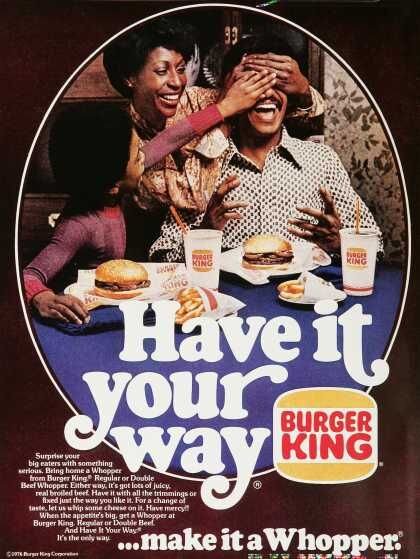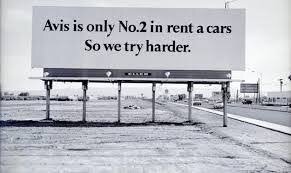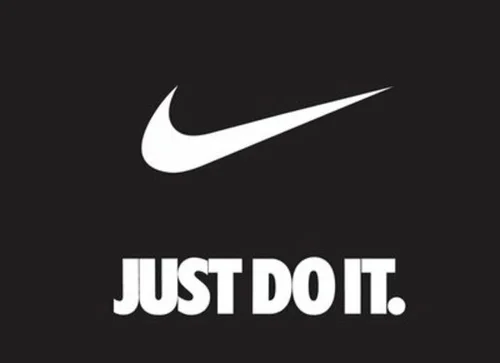What’s in a brand slogan? Everything. Your brand is your business and a brand slogan is a short and simple representation of what your business is and what it stands for. It is a promise to your customers about who you are and what you’re committed to delivering, which communicates a brand’s purpose. A fitting and creative slogan also gives your business personality and recognizability. For example, most of us can recite the slogans of some of the world’s most popular brands like McDonald’s “I’m lovin’ it” or State Farm’s “Like a good neighbor, State Farm is there”.
In times of crisis (like the one the world is currently experiencing), leaning on your brand slogan and the values it represents can not only help guide your marketing strategies but can uphold that vow you made to your customers long ago.
When the “new normal” is anything but normal, a slogan, motto, tagline, or vision/mission statement can realign you with your original intention, remind you of what differentiates you from your competitors and help you stay true to your brand. Most importantly, it could mean the difference between barely surviving and thriving in an economic downturn.
SO, WHAT MAKES SOME SLOGANS SO ICONIC?
The most memorable slogans are those that combine a clear brand promise with creative messaging or advertising that stands out from the competition using humor or an emotional connection with the audience.
To help inspire and steer your marketing efforts, especially during this challenging time, we looked at seven legendary business slogans created by highly recognizable brands.
“WHERE’S THE BEEF?” – WENDY’S, 1984

During a crisis, consumers tend to jump into survival mode and focus on essentials or things of substance. In other words – the beef! Everything else can seem like a luxury when you’re worried about your health and safety. So, it’s no wonder that a sales pitch is the last thing we want to receive during this time.
In fact, a recent study by Edelman on 12,000 consumers globally, found that 71% believe that brands focused on making a profit instead of helping people during this pandemic would lose their trust indefinitely.
That is why, in this climate, brands should be sensitive to the current mood of consumers and shift the tone of their advertising or communications towards empathy, avoiding messages that disregard the current crisis or appear highly focused on selling. This is not the time for high-pressure sales. This is the moment to be extremely focused on customer needs. In the Edelman study, a whopping number of study participants stated that they want businesses to educate them not only about their brand (85%) and what they’re doing to be a part of the solution (89%), but also how to access products (88%) that can help alleviate any burdens they have.
However, consumers are not completely opposed to seeing advertising either. In another study done by Kantar, 92% of the 35,000 consumers polled felt that companies should continue to advertise during COVID, and 52% of respondents said that advertising even provided “a sense of normalcy”. So, it’s not necessary to halt all your advertising and communication efforts. Just watch your tone, educate consumers, and offer help.
“CAN YOU HEAR ME NOW?” – VERIZON, 2002

While businesses may not be able to interact as much in person with consumers as they did prior to the pandemic, there is no reason to stay silent. Customers still want to hear from you. In a study conducted on U.S. consumers by AMC Global, 81% want updates on product availability and 90% of consumers want to hear how brands are protecting their customers from COVID exposure. Yet, 62% also prefer reading encouraging and supportive messages over seeing advertising.
So, this is a good time to communicate – via email, social media, and on your website – about your company’s plans to help customers, employees, and the broader community, and do it often. But, keep the tone a bit more serious, as 57% of respondents prefer it at this moment. The goodwill you build today could pay off with customers once things are more stable.
“YOU’RE IN GOOD HANDS” – ALLSTATE, 1950

According to HubSpot:
Customer experience (CX) is the impressions your customers have of your brand as a whole throughout all aspects of the buyer’s journey. It results in their view of your brand and impacts factors related to your bottom-line including revenue.
During a crisis, paying attention to CX is even more critical because a negative impression can instantly erase many positive ones your customer has already experienced. What’s more, if they share a bad experience online, this could create exponentially negative impressions with other customers and prospects.
To realign your CX, put yourself in the shoes of your customer to try to see your products and customer service from their perspective. Then, as a business owner, ask yourself a series of questions ending with “right now”.
- What do they need from us?
- What would make it easier for them to do business with us?
- Can we offer a discount on a product they value?
- Can we make the sales process less cumbersome by eliminating unnecessary steps?
- Can I better train my staff to listen more and be extra comforting to customers?
The answers to these questions will not only generate ideas to improve your brand’s customer experience but will also let your customers know that you care and that they’re in good hands.
“HAVE IT YOUR WAY” – BURGER KING, 1974

Having a competitive advantage is always beneficial, but it is especially valuable in uncertain times. The advice here is “look to fill the gaps”. As a business owner, you should always be looking at what products your competitors are offering that you are not (and possibly should be offering). More importantly, you should be studying what products you CAN provide that your competitors cannot (a differentiator).
By offering something more or different than your competitors, your customers can have it their way. Ask yourself honestly about the value of what you offer and whether you would be willing to pay for it. If the answer is no, why would you expect your customers to pay? Your product must be perceived by your customers as more valuable than your competitor’s to be considered a differentiator.
Below are things to consider when looking for ways to differentiate your brand:
PRODUCT DIFFERENTIATION
Features | Performance | Efficacy | Conformance | Durability |Reliability | Warranty
SERVICE DIFFERENTIATION
Ordering Ease | Delivery | Installation | Customer Training | Customer Consulting |
Other Miscellaneous Services
CHANNEL DIFFERENTIATION
Coverage | Expertise | Performance
RELATIONSHIP DIFFERENTIATION
Competence | Courtesy | Credibility | Reliability Responsiveness | Communication
REPUTATION/IMAGE DIFFERENTIATION
Perception | Communication | Advertising
PRICE DIFFERENTIATION
By Customer | By Quantity | By Segment
Source: MarketResearch.com
When in doubt, do some market research of your own. Ask your most loyal customers why they chose to do business with you over a competitor. You can also do the opposite and ask prospects who chose to do business with a competitor to give you some insight by sharing where your business or proposal fell short with them. Instead of being offended by their answer, look at it as an opportunity to discover something you might not otherwise have been able to. Either way, you may be surprised by their answers and can gain more understanding of what your target audience perceives as valuable.
“WE TRY HARDER” – AVIS, 1962

Agility in business means being able to respond fast. During difficult times, having a business culture that encourages employees to respond to the current market could save your company from going out of business.
I recently witnessed this kind of responsiveness at a Jiffy Lube franchise near me. The team at this store, which previously interacted with customers face-to-face, demonstrated responsiveness by asking customers to remain in their vehicles during their oil change service, as to limit unnecessary interaction. To accomplish this, they added portable cooling systems that pumped cold air into customers’ cars during the visit. They also retrained their staff to move quicker, practice social distancing, wear masks, and process payments with minimal contact. Now, customers can get their oil changed without risking their health. This is nimbleness at its finest!
During this pandemic, most businesses are making changes to keep employees and customers safe, while still making the customer experience a high priority. However, having the flexibility to adjust your marketing strategy can be just as important. For example, if you’ve cut back on your online advertising during the pandemic, refocus your attention on email marketing campaigns to stay front of mind with your customers and prospects. If the company website traffic is down, create new and valuable content to share with customers, such as videos telling them how your business is making it safer for them and employees, while re-emphasizing that promise you made to them in your slogan. If you can’t see customers in person, make sure they know you’re available for virtual consultations. These are small adjustments that can help get your business through this difficult time.
What’s vital now is that you keep an open mind and stay agile while offering your employees the same grace. Provide your team with a psychologically safe space to foster creativity, which is so valuable. A space that gives them the freedom to see a customer issue and instantly design a solution for it.
If your business can manage to adapt and try harder to meet customers’ needs, you will gain their trust, which is an important ingredient in building long-lasting relationships.
“JUST DO IT” – NIKE, 1988

Today, assessing brand trust is an important metric, especially since 67% of consumers in a 2019 Edelman study said that trusting a brand they buy from is important. Moreover, 80% said that trust is the deciding factor in their purchase decision, and 63% are willing to pay more for a product from a brand that they trust. This means that brands should consistently deliver on their brand promise, but it also strongly indicates that brands must not just “talk the talk”. They must also “walk the walk”.
Commit to helping your employees, your customers or your community in some meaningful way that’s within your capacity. If you say you’re going to do something, just do it. Your brand’s actions are under the watchful eyes of customers’ and prospects more than ever, and your actions could be a determining factor in whether they buy from you or not after the crisis is over.
However, you may be surprised by some of the brands we consider most trustworthy in America. According to a study by market research company Morning Consult, the top 10 most trusted brands include USPS, Chick-fil-A, Hershey’s, Cheerios and M&Ms. The study also found that 69% of consumers believe that it’s “very important” for brands to reliably deliver what they promise (there’s that word again!).
A DIAMOND IS FOREVER – DE BEERS, 1948

When a brand has loyal customers, it can be easier to retain them. HubSpot research shows that 93% of loyal customers become repeat customers, and a 5% increase customer retention can lift profits by at least 25% (Bain & Company).
So, how does a brand create loyalty?
Here are a few things to ask yourself:
- Do we know really our audience?
- Do we know what needs our brand provides for that audience?
- Do we create authentic bonds with our audience?
- Do we know what inspires our audience to believe in our brand?
To get to loyalty, you must start with trust, and the only way to trust is through consistently providing great customer experiences. Never assume you’ve arrived at trust. Like a diamond, you must keep polishing it so that it retains its value forever.
As you can see there is a chain reaction here:

- Quality products + good CX = trust
- Steady brand trust = brand loyalty
- Unwavering brand loyalty = customer retention
- Consistent customer retention = more profits
Brands with a cult-like following – like Apple, Starbucks, Amazon, and Google – did not just stumble upon this formula overnight. These companies began the process by developing products that delighted their audiences and combined that with consistent customer experiences. They listened to their customers and pivoted when necessary. When new competitors entered the market, they went back to the drawing board to create new differentiators and found new and exciting ways to inspire fans. For these brands, it took years of iterations to develop their secret sauce, whose cumulative effects continue to add up to more and more profits today.
Yet, you do not have to be a large brand to achieve this. Keep in mind that all large brands started small. Therefore, smaller brands can and should take similar steps to ensure their long-term success. An article published by an online payment processing company, Due, offers seven steps to help smaller brands compete:
- Specialize – Differentiate by carrying products your competitors don’t. If you have a service-based business, focus on word-of-mouth referrals and online reviews, plus provide good experiences.
- Know your customers personally – Learn your customers’ names and preferences.
- Capture contact information – Get your customers’ contact information to offer discounts, coupons, and send customized email campaigns that address their interests and provide solutions to their specific problem.
- Price competitively – Compare your pricing to competitors to make sure you’re within a reasonable range.
- Take risks – Small businesses can be responsive and move faster than larger firms, so don’t be afraid to make minor changes to your business model to test customer reactions.
- Use tech tools – Large brands have big marketing budgets, but that doesn’t mean you can’t afford compatible technology tools to help you grow your business. Look into accounting software, marketing platforms like a CRM (customer relationship management), and other business intelligence tools online that are affordable. Plus, many offer dashboards that allow you to see what’s working and what’s not, so you can pivot when necessary.
- Partner up – Establish affiliations with local businesses or community organizations (like the Chamber or networking groups) to participate in, host, or sponsor local community events to gain exposure.
If your business follows some of the guidelines above, it could also become a household name someday.
SO, HOW CAN I GET A POWERFUL AND
MEMORABLE SLOGAN FOR MY BRAND?
I thought you’d never ask. Here are 5 tips from a Sumo.com article on how to develop an effective slogan for your business.
- Keep it simple – Try to keep your tagline no longer than six words.
- Give it meaning – Your tagline should bring meaning to your brand.
- Clarity is key – It should clearly state the mission and purpose of your company.
- Focus on the benefits – Share the main benefit of your brand or product.
- Tell a story – A tagline should tell a strong story, so it leads to sales.
If you have given some thought to your company’s competitive advantage, you may be able to come up with a slogan quickly. However, don’t fret about it if you can’t. This creative process can take some time and will allow you to run several versions by customers to get their feedback.
In the end, marketing in a pandemic is almost the same as marketing in normal times, except that you must pay even closer attention to the needs of your customers and act upon them. Focus on delivering great products and customer experiences and use every opportunity to build customer relationships. Take this time to improve and innovate, develop trust to improve the chances that they will buy from your business once the crisis has passed, and stick to the commitment that you made in your brand slogan about what your brand is and what it offers.
| Cindy HernandezChief Strategistilumas, inc. |
| LEARN MORE |
| Create Your Own Free Signature |